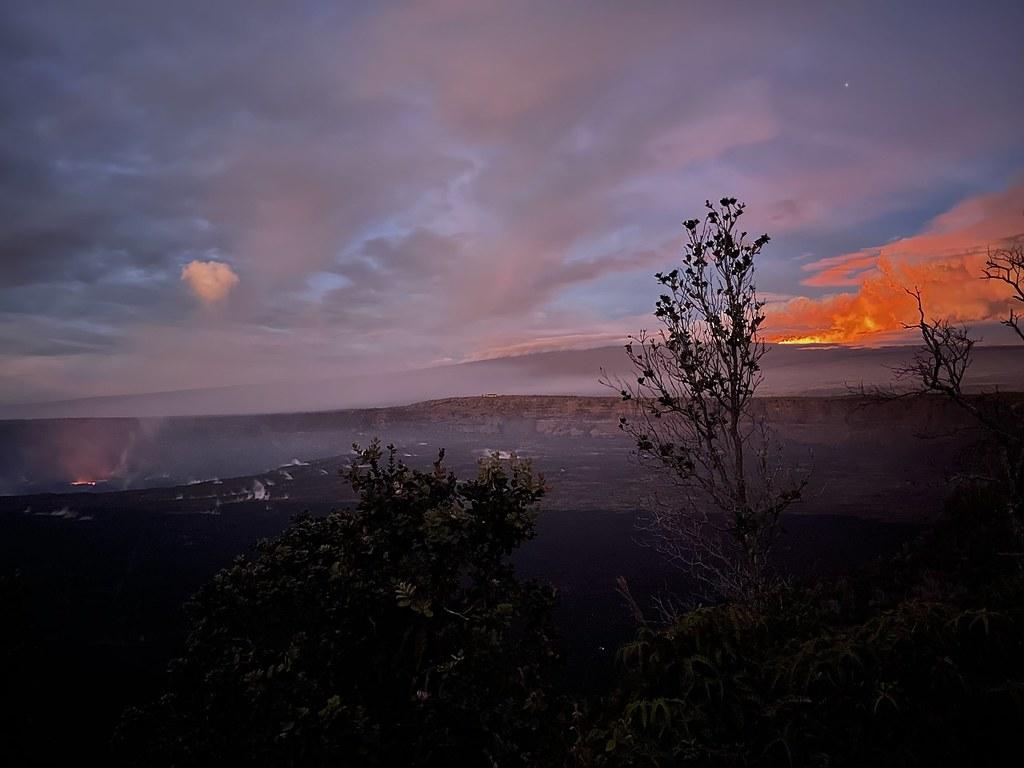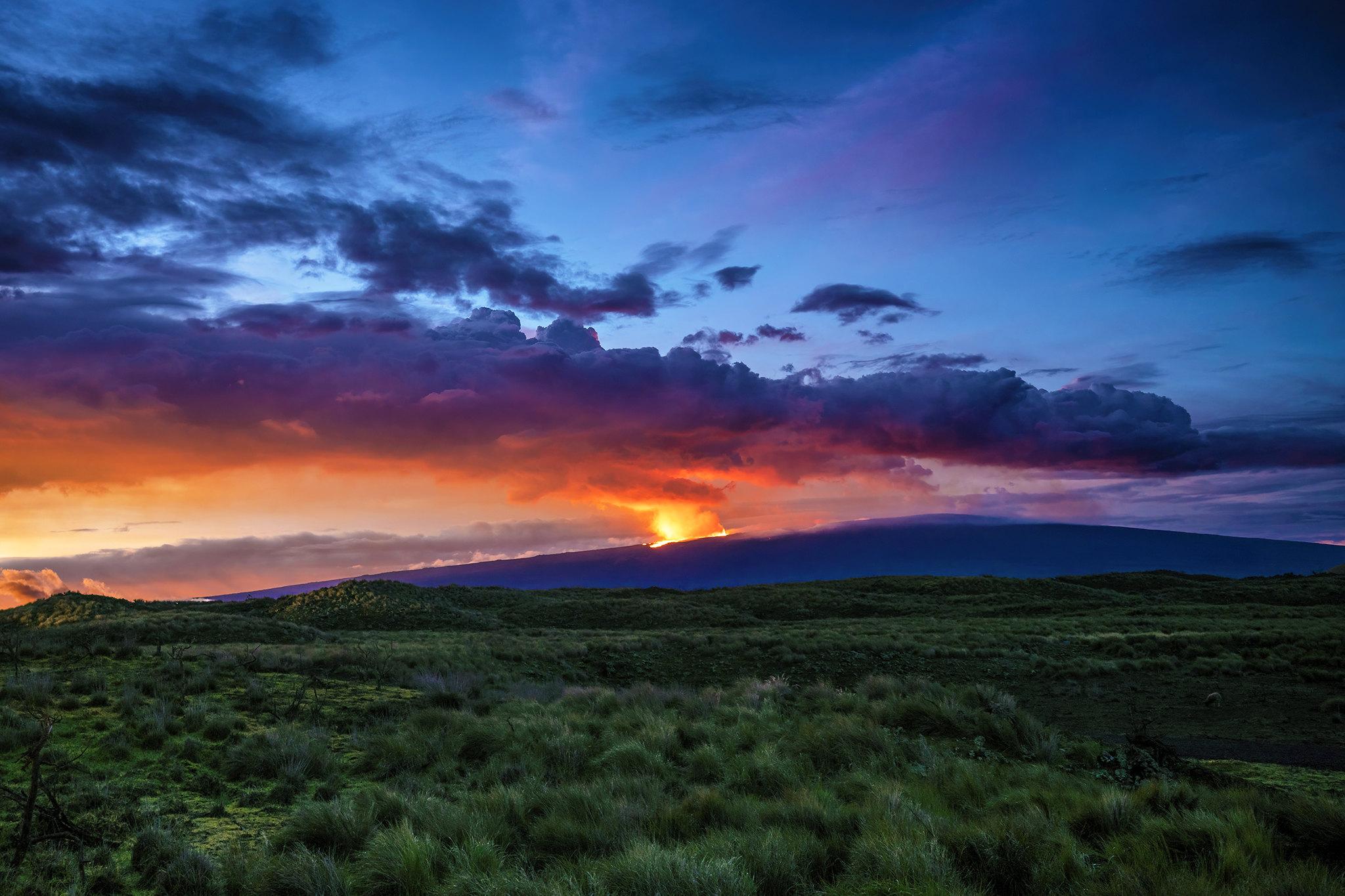
For the first time since 1984, both the Kīlauea (lower left) and Mauna Loa volcanoes are erupting at Hawai'i Volcanoes National Park/NPS
When Mauna Loa came to life Sunday, it not only marked the first time in nearly 40 years that the world's largest active volcano erupted, but also the first time since 1984 that Hawai'i Volcanoes National Park's two volcanoes erupted simultaneously.
Mauna Loa, which has been shaking with a high number of earthquakes for much of the fall, began spewing molten rock from its 13,677-foot summit late Sunday night local time. Initially the lava was confined within Moku‘āweoweo, the summit caldera, but hours later it slowly began flowing out of the Northeast rift zone.
Down mountain to the south, the nearby Kīlauea volcano continued its eruptions from its Halema‘uma‘u crater that started back on September 29, 2021. That eruption has been confined to the crater.
According to the U.S. Geological Survey, the glowing performances were the first simultaneous eruptions of the two volcanoes since March 30, 1984. Prior to that, they both erupted in 1924, the agency said.

The Monday morning view of Mauna Loa's eruption from the Saddle Road/NPS
According to the National Park Service, "(E)ruptions of Mauna Loa have historically been characterized by high volume flows that produce lava capable of traveling long distances, contributing to its shape. Scientists believe that 90 percent of the volcano's surface has been covered with flows that erupted within the past 4,000 years."
Manua Loa's past eruptions suggest residents and visitors to the Big Island should be prepared to get out of the way if Mauna Loa's current eruption ramps up in force.
Mauna Loa eruptions tend to produce voluminous, fast-moving lava flows that can impact communities on the east and west sides of the Island of Hawaiʻi. Since the mid-19th century, the city of Hilo in east Hawaiʻi has been threatened by seven Mauna Loa lava flows. Mauna Loa lava flows have reached the south and west coasts of the island eight times: in 1859, 1868, 1887, 1926, 1919, and three times in 1950. -- USGS
Last year the park staff noted that, "Mauna Loa has erupted 33 times since 1843— averaging once every five years. Over a longer period of time, the past 3,000 years, it's estimated to have erupted once every six years. We are currently in the volcano's longest quiet period since written records have been kept, as it has not erupted since 1984."
The eruption of Mauna Loa prompted the park to close the Mauna Loa Road to vehicles from the gate at Kīpukapuaulu on Monday morning. The summit, cabins and high-elevation areas of Mauna Loa have been closed since early October when the volcano began to show signs of unrest and increased seismicity. In addition, Mauna Loa Observatory Road outside of the park was also closed to the public.
The new eruption is expected to draw an influx of visitors to Hawaiʻi Volcanoes National Park who hope to see a rare dual eruption from both Kīlauea and Mauna Loa volcanoes. Viewing areas along Kīlauea caldera before sunrise revealed a massive glow from Mauna Loa caldera, Mokuʻāweoweo (13,677 feet elevation) and a smaller lava lake within Halemaʻumaʻu (4,009 feet) at the summit of Kīlauea.
Neither eruption is threatening homes or infrastructure at this time, the park reported.
“Hawaiʻi Volcanoes National Park is keeping close watch on Mauna Loa in tandem with our colleagues at USGS and Hawaiʻi County Civil Defense,” said Hawaiʻi Volcanoes Superintendent Rhonda Loh. “The park is currently open, but visitors should be prepared and stay informed."




Add comment